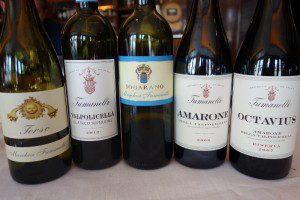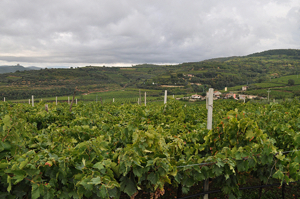Located in the Northeast of Italy is the Veneto Region, famous for the canals of Venice, the architecture of Palladio and the home of Romeo and Juliet. Comprised of seven provinces, five of them produce wine: Verona, Vicenza, Padua, Treviso and Venice. The Veneto Region is also responsible for producing 20% of all Italian D.O.C. wines. In fact, there are a total of 25 D.O.C. wines and 11 D.O.C.G. wines from within the Veneto region.

At the border of Verona and Vicenza is Gambellara D.O.C. which is also made with the Garganega grape. In addition to the dry white wine Gambellara, Garganega is also used in the sweet wine production of Gambellara Vin Santo D.O.C.G. and Recioto di Gambellara D.O.C.G. Monti Lessini D.O.C. comes from the hills of Vicenza and is made with the highly acidic Durella grape to make a crisp sparkling wine.
At the foot of the mountains is the area of Breganze, famous for the Vesapiolo grape which is used to make Breganze Vespaiolo, Breganze Vespaiolo Spumante and Breganze Torcololato, a passito wine. In the south of Vicenza is the Colli Berici D.O.C. which comes from the Berici Hills. The most typical varietal is Tocai Rosso (now called Tai Rosso) which is the same clone as Grenache and has characteristics of strawberry, cherry, raspberry and spice.
20 November, 2011
 Armando walked into the restaurant where we were seated at a table of women. This tall, distinguished gentleman walked to our table and introduced himself. He was so modest and friendly but we were about to find out how extraordinary he is.
Armando walked into the restaurant where we were seated at a table of women. This tall, distinguished gentleman walked to our table and introduced himself. He was so modest and friendly but we were about to find out how extraordinary he is.





